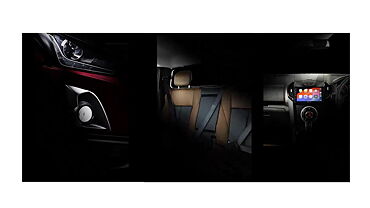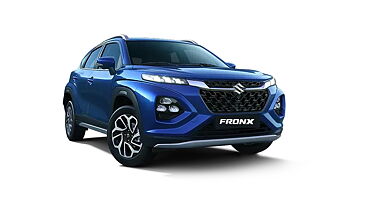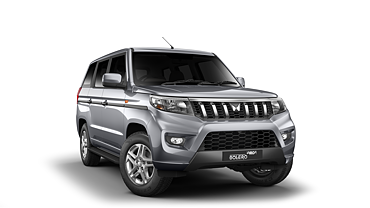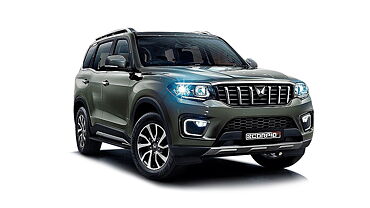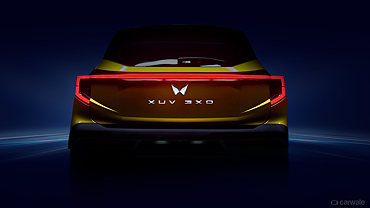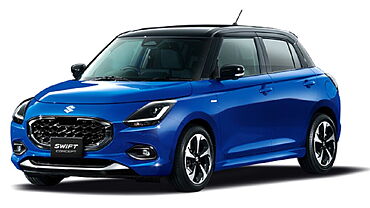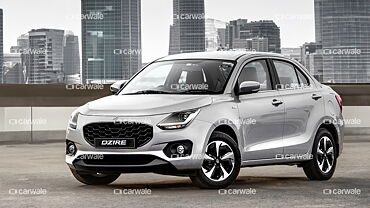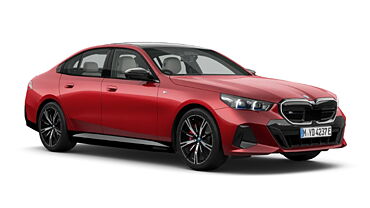
Why I Would Buy It?
- Useable, accessible, and comfortable last row
- Spacious and feature-rich cabin
- Easy to drive
Why I Would Avoid It?
- Noisy ride
- Middle seat in the second row is uncomfortable
- Blue coloured plastic for dash, door pads, and steering
Engine and Performance

The Carens uses the same engine and gearbox options as its sibling, the Seltos. So, there’s a naturally aspirated 1.5-litre petrol with 115bhp on tap. The diesel too is a 1.5-litre unit with a max power output of 115bhp. And then there’s the enthusiast-centric 1.4-litre turbo-petrol that makes a healthy and enticing 140bhp of power and 242Nm of torque.
We drove the diesel with the six-speed automatic. And it is torquey, capable, and when driven with a measured foot, an efficient unit. It’s not the most refined diesel out there, but keep it under 2,500rpm, and you can barely hear the engine hum and clatter from under the Carens’ bonnet.

Now, even though this combination feels best when driven with a light or medium foot as it offers quiet and brisk progress, one can still hustle the Carens to drive spiritedly. It will, however, get louder with rising revs. And the automatic might need some help via the paddle shifters for better control. But, the Carens in this diesel automatic guise is more than up to getting to triple-digit speeds quickly, and holding its own even on a winding road where heavy throttle inputs and strong corner exits are key.
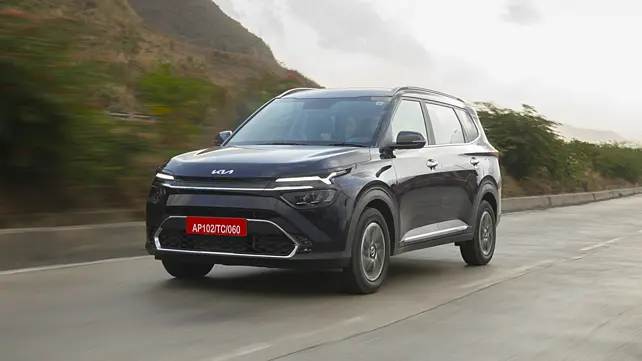
In terms of performance, the Carens diesel automatic recorded a 0-100kmph time of under 12 seconds, which is pretty impressive. And not just for an MPV. Even in terms of kick-down - which is a reflection of how easy it is to overtake - it took under nine seconds to complete the 40-100kmph run; again, making the Carens very drivable indeed.
Ride and Handling
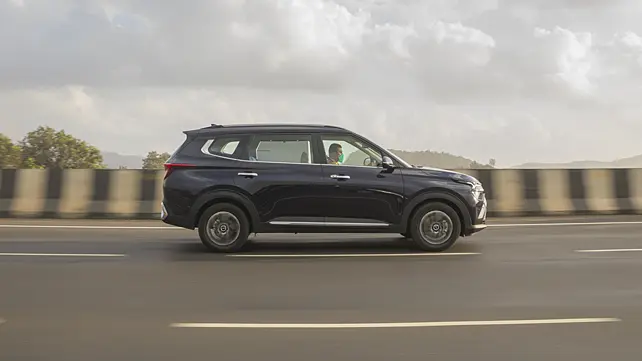
The Carens might be a three-row MPV dressed to look like a sport utility vehicle, but it can still bring the ‘sport’ game to a set of corners. It doesn’t have the best steering feel or response, we agree. There’s also some body roll when it’s pushed hard around a bend. And its length becomes obvious when making quick direction changes at speed.
However, it’s easy, and in fact enjoyable, to work around these shortcomings. The steering for one is accurate and reasonably quick even though it’s devoid of feel. And if you let the Carens settle on its springs progressively when entering a corner, it allows for some quick mid-corner speeds. As far as quick direction changes go, if you have good reflexes or anticipating abilities, you can have some fun tail-out moments and live to tell the tale.
But the real strong point for the Carens is its ride quality. The absorption ability and the damping characteristics of the suspension - especially at the rear – are fantastic. Show it a broken road, joints in flyovers, low amplitude speed breakers, and what have you, and the Carens simply glides over it all as the road was perfect. It doesn’t get upset over undulating roads either. And all of this is true no matter what speed one drives at, slow or fast.
It does have two chinks in its ride quality armour, nonetheless. The ride though absorbent, is noisy. And that makes the Carens seem like a car from a segment below than it will come at. The other bit is the comfort levels for the last row passengers. The ride feels sharper and less absorbent right at the back. And the seats too tend to vibrate when going over a poor road which drops the comfort level further. The good bit however is, unlike many other three-row vehicles wherein the last row occupants feel the wallowing over undulating roads a lot more than the rest in the car, the Carens feels flatter and calmer right at the back.
Exterior
The Kia Carens is based on the Seltos. However, to make it a useful three-row car, Kia has extended the wheelbase, and with it the length of the Carens significantly. The width however remains unchanged when compared to the Seltos.

And so, even though Kia designers have done a good job to give it some pizzazz with the plastic cladding around the wheel arches and a buff-looking front end, one look at the Carens in profile or from the front three-fourth angle, and its MPV nature clearly comes through. It’s also quite obvious from its rear-end design; the liberal use of chrome notwithstanding.
But overall, the Carens has turned out to be a good-looking car, even if not very SUV-esque. However, in a world where everyone from an accountant to a celebrity, and an 18-year-old to an 80, wants an SUV, the Carens still has an uphill task ahead.
Comfort, Convenience, and Features:
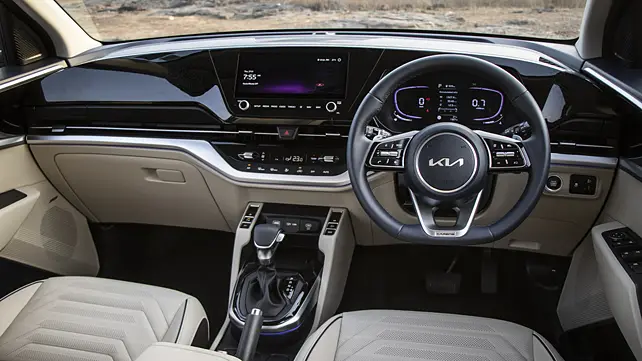
The big play for the Carens is its standard feature list; safety feature list to be precise. Six airbags, ESP, downhill brake assist, tyre pressure monitoring apart from rear parking sensors, and the ABS are offered as standard on all Carens trims. Also standard is the one-touch fold and tumble for the left seat in the second row, and the sliding and reclining function for the second row as a whole.
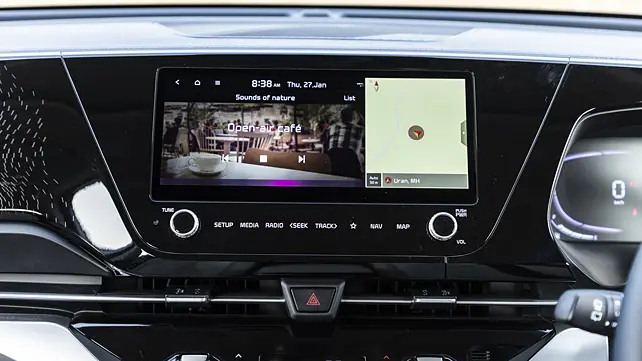
But, special to this Luxury Plus trim are features like the sunroof, ambient lighting, ventilated front seats, rain-sensing wipers, and a Bose sound system as part of the touchscreen multimedia setup. The menu for the multimedia system is elaborate, the touch sensitivity is good, and the UI is pretty straight forward too. This top-spec Carens also gets wireless charging with cooling function, and in the drive department, there are three driving modes and paddle shifters for the automatic versions.
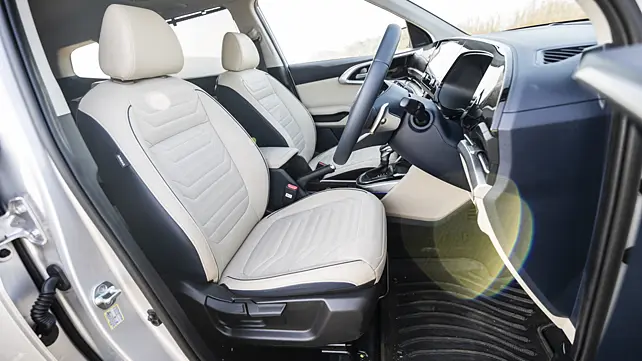
As far as seating goes, the seats all around are comfy. Now, these aren’t exactly big seats, no matter which row. So large-sized people might find them a little inadequate. For the average-sized Indian though, these should prove to be comfy, cushy, supportive, and accommodating enough. Thigh support all around isn’t a cause for concern either. And that means spending long hours sitting in these seats should be a breeze.

Barring the middle seat in the second row of the seven-seater version, that is. This is easily the most uncomfortable place to be in, in the Carens. In fact, we’d call it a punishment posting because the space is small, the seat-back is hard, and there’s no thigh support to speak of.
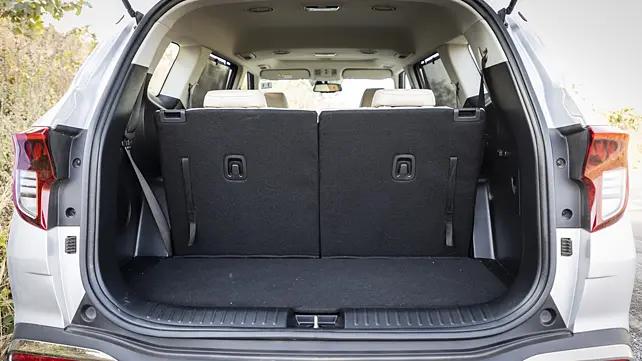
The space management inside the Carens’ though is well executed. There’s enough knee and elbow room at the front. The shoulder room in the second row, though not great, is acceptable. And even though the second row slides fore and aft, there’s passable knee room for an average sized adult even with the seat set in its forward most position. But, it’s the third row that surprised us with both the knee and shoulder room it offers for two passengers. It’s decently generous.
Conclusion
The Carens is a thoughtful, practical, and likeable product.

Things that work in its favour are the new dashboard design, the overall ergonomics, the comfortable seats, the space on offer in all three rows, the long feature list, the absorbent ride, the lovely visibility and light controls which make it easy to drive, and, of course, the fitness of purpose, which is to transport six to seven people with as less fatigue as possible.
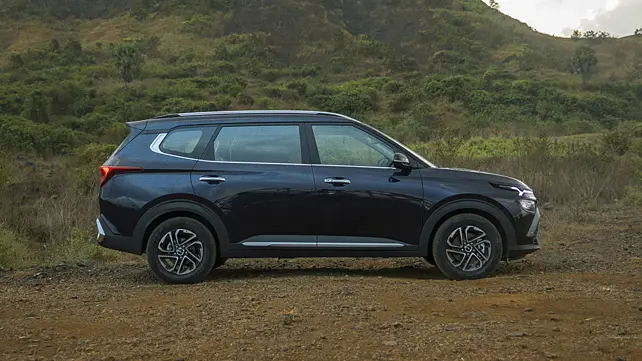
But not everything is right with the Carens. The blue colour for plastics for the dash, the door trims, and the steering wheel, for instance, will take some getting used to. Plus, the second-row split-bench seat is still more a two-seater than one that can seat three in comfort. Which seems pointless given there’s already a six-seater version with captain seats in the lineup.
Now, the big question: Should you buy it?

If the Carens undercuts the Seltos in terms of pricing, the six airbags, and the ESP being offered as standard on the former, notwithstanding, the Carens will be an absolute no-brainer purchase option. In fact, it would be a steal. I know the price expectation might seem a bit extreme, but if Kia wants to give itself a chance at success here, that’s what I think it needs to do. After all, everyone wants an SUV, and very few want an MPV that’s not mouth-wateringly well priced. Unless, of course, it’s the Toyota Innova Crysta.
Pictures by Kaustubh Gandhi and Kia India



![Kia Carens [2022-2023] Kia Carens [2022-2023]](https://imgd-ct.aeplcdn.com/160x89/n/cw/ec/107909/right-front-three-quarter-5.jpeg?isig=0&q=80)

